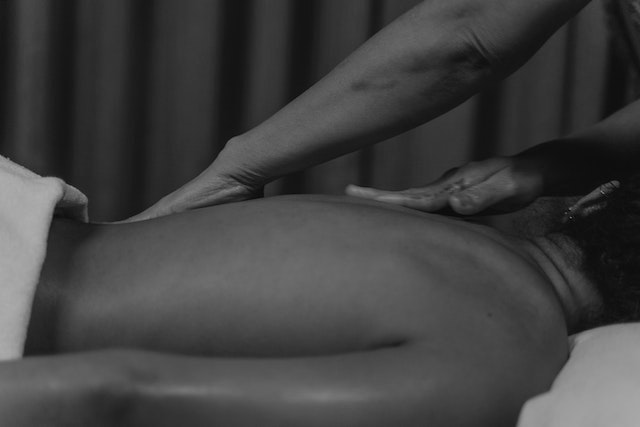Deep Tissue Massage Therapy
Deep tissue massage is a type of massage therapy that involves applying deep pressure to the muscles and connective tissues of the body to target knots, adhesions, and areas of tension. While deep tissue massage can be used to treat a wide range of conditions, it is particularly beneficial for athletes and individuals who experience chronic pain or muscle soreness.
In this comprehensive guide to deep tissue massage, we’ll explore the benefits, techniques, and best practices for incorporating deep tissue massage into your wellness routine.

Benefits of Deep Tissue Massage
Deep tissue massage can offer a number of benefits for individuals who experience chronic pain, muscle soreness, or other conditions related to the muscles and connective tissues. Some of the most notable benefits of deep tissue massage include:
1. Pain relief: By targeting knots and areas of tension, deep tissue massage can offer significant pain relief for individuals who experience chronic pain or muscle soreness.
2. Improved flexibility and range of motion: Deep tissue massage can help to release adhesions and increase circulation, which can help to improve flexibility and range of motion.
3. Injury prevention: By addressing muscle imbalances and areas of tension, deep tissue massage can help to prevent injuries before they occur.
4. Faster recovery: After a strenuous workout or competition, deep tissue massage can help to promote muscle recovery by reducing muscle soreness and aiding in the removal of metabolic waste products.
5. Improved mental focus: Deep tissue massage can also help to reduce stress and anxiety, improve sleep quality, and promote an overall sense of relaxation, which can help individuals to stay mentally focused and perform at their best.
Techniques Used in Deep Tissue Massage
Deep tissue massage typically involves a variety of techniques designed to target knots, adhesions, and areas of tension. Some of the most common techniques used in deep tissue massage include:
1. Stripping: This technique involves applying deep pressure along the length of the muscle fibers to target knots and areas of tension.
2. Friction: This technique involves applying pressure in circular or back-and-forth movements to break up adhesions and scar tissue.
3. Trigger point therapy: This technique involves applying pressure to specific points on the body to release knots and areas of tension.
4. Myofascial release: This technique involves applying sustained pressure to the connective tissues of the body to promote relaxation and increase range of motion.
Best Practices for Incorporating Deep Tissue Massage into Your Wellness Routine
If you’re interested in incorporating deep tissue massage into your wellness routine, there are a few best practices to keep in mind:
1. Find a licensed and experienced massage therapist who is knowledgeable about deep tissue massage and its benefits.
2. Communicate your specific goals and concerns to your massage therapist before your session so that they can tailor their techniques to meet your needs.
3. Be prepared for some discomfort during your deep tissue massage session, as this type of massage involves deep pressure and may be uncomfortable at times.
4. Stay hydrated before and after your deep tissue massage session to aid in the removal of metabolic waste products from the body.
5. Listen to your body and adjust your wellness routine as needed to avoid overtraining or injury.
Conclusion
Deep tissue massage can offer a wide range of benefits for individuals who experience chronic pain, muscle soreness, or other conditions related to the muscles and connective tissues. By incorporating regular deep tissue massage sessions into your wellness routine and following best practices for self-care, you can help to maintain muscle health and stay at the top of your game.

Book Your Deep Tissue Massage
Experience the ultimate relief and revitalization with our rejuvenating deep tissue massage.
